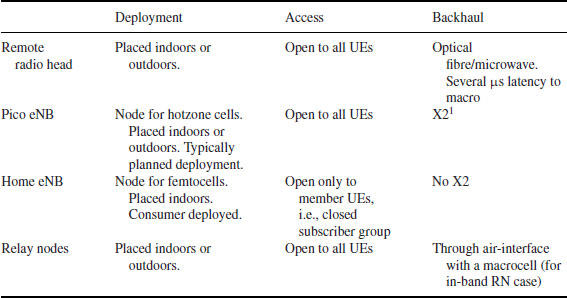13
Evolution of HetNet Technologies in LTE-advanced Standards
13.1 Introduction
In the 3GPP LTE-Advanced workshop held in Shenzhen, China, in 2008, introduction of heterogeneous networks was proposed as a method of increasing the overall network capacity by means of further cell splitting (e.g., [1]). Heterogeneous networks include base stations (or enhanced NodeBs, eNBs) with different orders of transmission powers, which is the main distinguishing feature from the homogeneous networks where base stations transmit with the same order of transmission power.
Depending on the cell coverage and the backhaul assumptions, base stations are classified into macro, pico, femto, remote radio head (RRH) and relays. Macro base stations are those base stations considered in the traditional homogenous networks, transmitting signals with a relatively high power, such as 20 W for 5 MHz and 40 W for 10 MHz bandwidth. On the other hand, the new types of base stations transmitting signals with a relatively low power are characterized in the 3GPP technical report 36.814 [2] (see Table 13.1).
Table 13.1 Categorization of the new nodes

During the 3GPP LTE-Advanced Rel-10 work item phase, two deployment scenarios – macro–femto and macro–pico scenarios – were primarily investigated and new ...
Get Heterogeneous Cellular Networks now with the O’Reilly learning platform.
O’Reilly members experience books, live events, courses curated by job role, and more from O’Reilly and nearly 200 top publishers.

